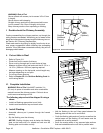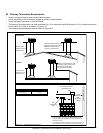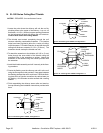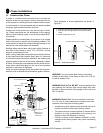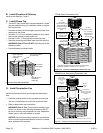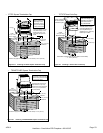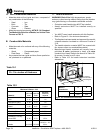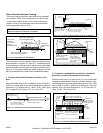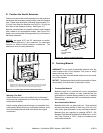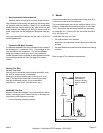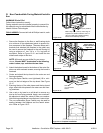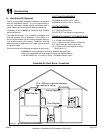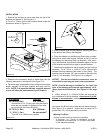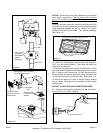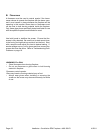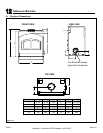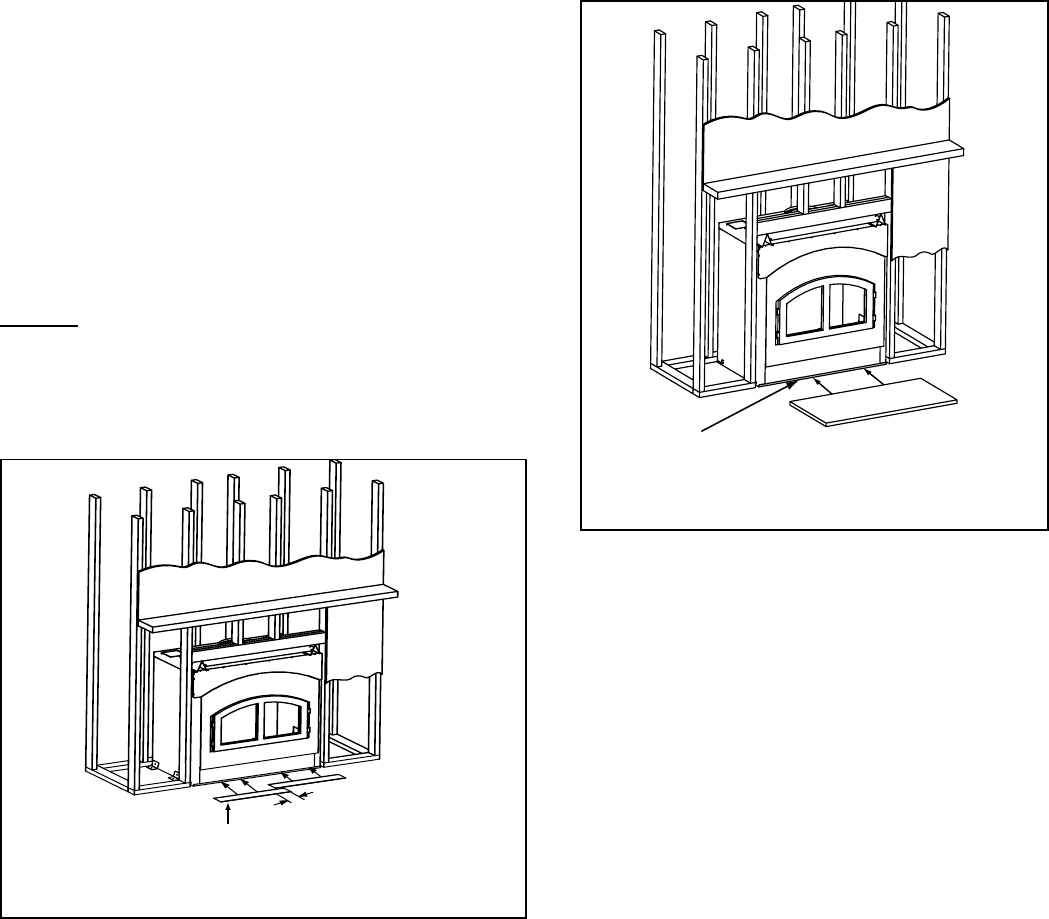
Page 56
Heatilator • Constitution EPA Fireplace • 480-1091D
4/20/11
Position and secure the hearth extension over the protective
metal strips that have been placed partially under the replace
front. These strips should be protruding approximately 2 in.
(51 mm) from under the replace front and 2 in. (51 mm) on
both sides of the replace opening. See Figure 10.7.
Seal the crack between the hearth extension and replace
with a bead of non-combustible sealant. See Figure 10.8.
Apply a non-combustible nishing material of your choice to
the hearth extension.
NOTICE:
-
Warning! Fire Risk!
Figure 10.7 Positioning the Protective Metal Hearth Strips
Seal with
non-combustible
sealant
Figure 10.8 Position the Hearth Extension
Protective metal strips are placed 2 in.(51mm) under the front of the
fireplace and must extend beyond the front and sides of fireplace
opening by 2 in. (51mm). Nail or screw metal strips in place.
Pallet
Mounting
Brackets
1 in. (25mm) Overlap
E. Finishing Material
WARNING!
You may only use noncombustible material over the metal
face of the replace.
NOTICE:
• Combustible Material
Materials made of or surfaced with wood, compressed
paper, plant bers, plastics, or other materials that can
ignite and burn, whether ame proofed or not, or whether
plastered or un-plastered shall be considered combus-
tible materials.
• Non-Combustible Material
Materials which will not ignite and burn. Such materials
are those consisting entirely of steel, iron, brick, tile, con-
crete, slate, glass or plasters, or any combination thereof.
Materials that are reported as passing ASTM E 136,
Standard Test Method for Behavior of Materials, in a Ver-
tical Tube Furnace at 750°C, shall be considered non-
combustible materials.
D. Position the Hearth Extension



